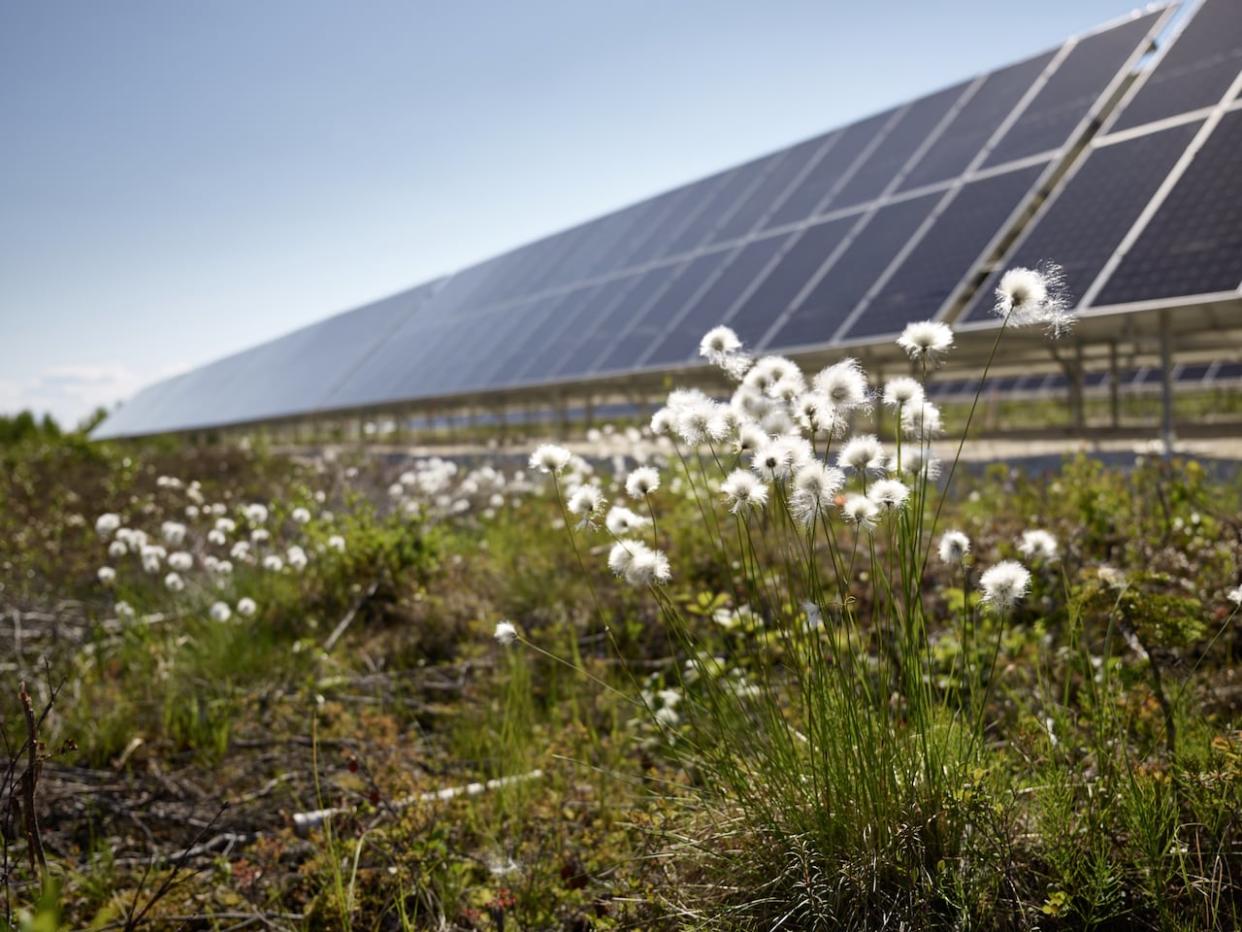Yukon gov't's emissions targets 'not possible' without energy storage, report says

Without energy storage, the Yukon government could miss its emissions targets, a report suggests.
Produced by Navius Research, a Vancouver-based firm, and commissioned by the government, the report analyzes how the territory can meet electricity demand into 2050 in the most economical way. The analysis factors in things like wind and solar projects, which "are the most cost-effective options for meeting new electricity demand on both integrated and remote grids."
The report, obtained by CBC News and not yet public, is in response to the territorial government's goal to reduce emissions by 45 per cent this decade under its climate change plan, called Our Clean Future.
Central to that work is ensuring 97 per cent of the territory's electricity comes from renewables.
But the challenge with adding solar arrays or wind turbines to the territory's power system is that the electricity they generate is variable — at the whims of weather.
Enter energy storage. Specifically, pumped hydro storage and lithium-ion batteries, which the report states are "the two most promising technologies for storing electricity in the Yukon."
With the territory's population expected to keep growing, the report states electricity demand in the coming years could more than double compared to 2020 rates.
"This analysis suggests," the report states, "that the requirements of Our Clean Future is not possible without storage unless hydro capacity is increased beyond planned expansions."
Government remains confident
Shane Andre, the director of the government's energy branch, said there's a fair amount of storage at hydro facilities already.
"We do have the potential for more hydro facilities and more energy storage, and you see some of those projects being proposed," he said, referring to Yukon Energy's grid-scale battery project in Whitehorse, a $35-million initiative to install the largest battery of its kind in the North.
"And then you also see some interesting project ideas related to things like a grid connect to B.C., which would allow the territory to then take advantage of energy storage in other jurisdictions."
NDP MLA Lane Tredger challenges that idea, saying linking to the B.C. grid would be too expensive.
Instead, Tredger suggests keeping things local like scaling up the Yukon Conservation Society's thermal energy storage project, an electric device that heats ceramic bricks with a hot coil overnight, then, during peak energy demand, emits warmth inside homes.
Speaking to the report, Tredger said the findings of the report track. Still, the MLA remains confident targets can be met, with the right leadership.
"We need renewables to meet those targets, we need storage to make those renewables work for the grid, and that all has to come together to meet our targets," they said.
It appears some major planned projects are on the rocks. Officials have said the Moon Lake pumped storage projects won't be online in time as originally planned by 2028. And the Atlin hydro expansion project is facing a more than $100-million budget shortfall. The Southern Lakes enhanced storage project is also on hold.
Wind and solar won't solve it all
To Michael Ross, the industrial research chair in northern energy innovation at Yukon University, wind and solar projects aren't a panacea to meeting targets. Without the right storage, he said generated electricity will go to waste, adding that the timing of what's stored when, matters.
CBC News shared the Navius report with Ross, who said while its findings aren't surprising, still, they should serve as a wake-up call for the government to double down on energy storage plans.
He said the government needs to figure out how to store power on a daily basis, and keep costs down.
"One of the challenges is, power in has to equal power out, at all times" to maintain grid stability, Ross said. "But if there's a way to store extra energy when there's excess power and then utilize it when there's inefficient power, that could solve a lot of problems faced by the utilities.
"The challenge, then, becomes the cost. We want to reduce the cost of energy because battery systems are, overall, fairly expensive and they're not a net generator for the system."

